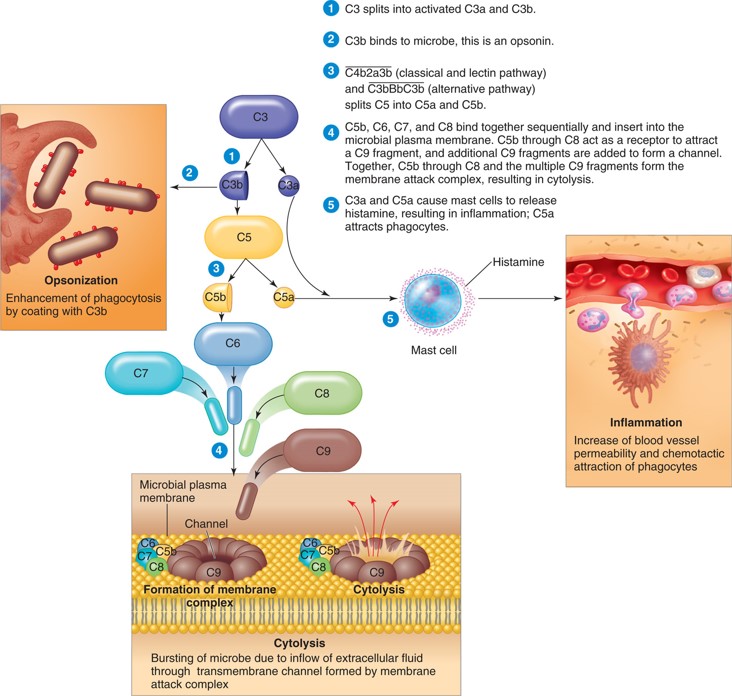 |
| Previous Image | Next Image |
| Description: Formation of membrane attack stage of complement. C3b containing structures (see above) on the pathogen surface splits C5 to C5a and C5b. C5b, C6, C7, and C8 sequentially bind to the pathogen surface and attract multiple C9 molecules. The C9 molecules form a channel and cell lysis can occur. It takes multiple C9 pores to cause cell lysis. The fragments that diffuse away have biologic activity. C3a, C5a, and C4a have anaphylatoxin activity and chemotactic activity. C3b is a potent opsonin.
Picture Stats: Views: 422 Filesize: 116.77kB Height: 696 Width: 732 Source: https://biology-forums.com/index.php?action=gallery;sa=view;id=31624 |
